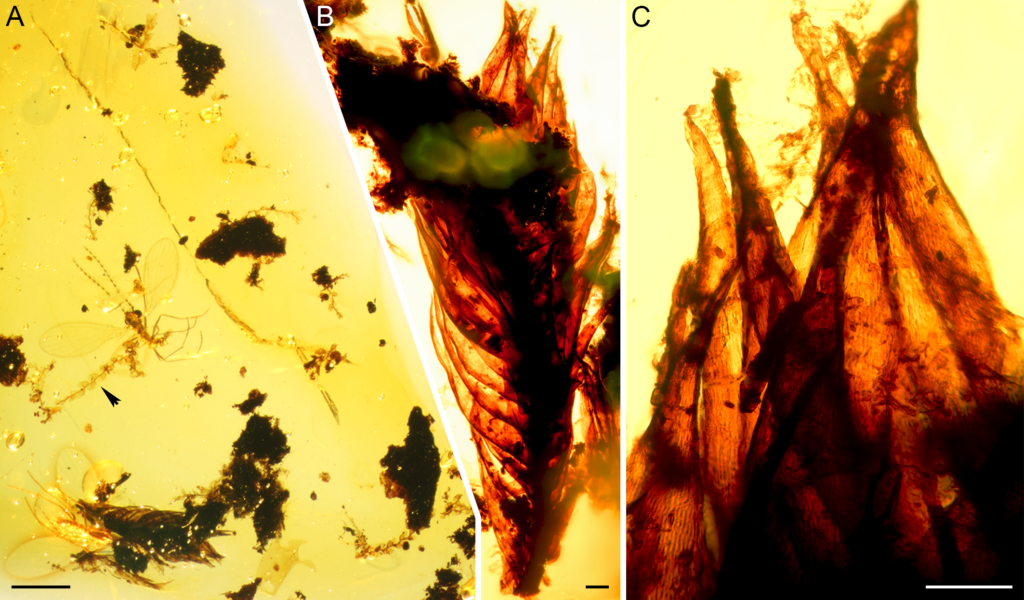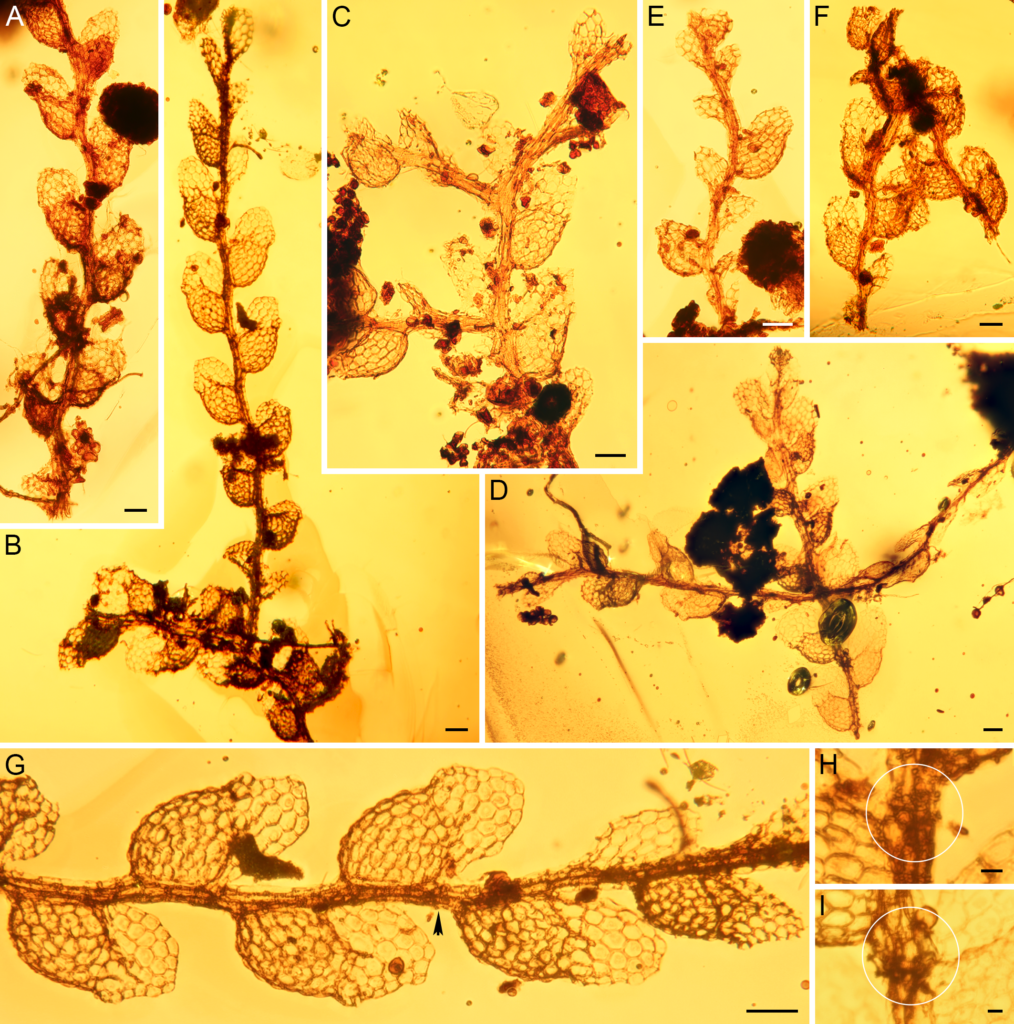@WFS,World Fossil Society,Riffin T Sajeev,Russel T Sajeev
Crown Group Lejeuneaceae and Pleurocarpous Mosses in Early Eocene (Ypresian) Indian Amber
Citation: Heinrichs J, Scheben A, Bechteler J, Lee GE, Schäfer-Verwimp A, Hedenäs L, et al. (2016) Crown Group Lejeuneaceae and Pleurocarpous Mosses in Early Eocene (Ypresian) Indian Amber. PLoS ONE 11(5): e0156301. https://doi.org/10.1371/journal.pone.0156301
Editor: William Oki Wong, Institute of Botany, CHINA

Cambay amber specimen AMNH-Tad-441-A.
(A) Overview showing liverwort and moss inclusions as well as two dipterans. The arrowhead points to the holotype of Microlejeunea nyiahae. (B) Pleurocarpous moss. (C) Close-up showing upper portions of leaves of the moss inclusion. The prosenchymatous cells are well visible. Scale bars 1 mm (A) and 100 μm (B,C).
Cambay amber originates from the warmest period of the Eocene, which is also well known for the appearance of early angiosperm-dominated megathermal forests. The humid climate of these forests may have triggered the evolution of epiphytic lineages of bryophytes; however, early Eocene fossils of bryophytes are rare. Here, we present evidence for lejeuneoid liverworts and pleurocarpous mosses in Cambay amber. The preserved morphology of the moss fossil is inconclusive for a detailed taxonomic treatment. The liverwort fossil is, however, distinctive; its zig-zagged stems, suberect complicate-bilobed leaves, large leaf lobules, and small, deeply bifid underleaves suggest a member of Lejeuneaceae subtribe Lejeuneinae (Harpalejeunea, Lejeunea, Microlejeunea). We tested alternative classification possibilities by conducting divergence time estimates based on DNA sequence variation of Lejeuneinae using the age of the fossil for corresponding age constraints. Consideration of the fossil as a stem group member of Microlejeunea or Lejeunea resulted in an Eocene to Late Cretaceous age of the Lejeuneinae crown group. This reconstruction is in good accordance with published divergence time estimates generated without the newly presented fossil evidence. Balancing available evidence, we describe the liverwort fossil as the extinct species Microlejeunea nyiahae, representing the oldest crown group fossil of Lejeuneaceae.

Microlejeunea nyiahae sp. nov. (AMNH-Tad-441-A) from Eocene Cambay amber.
(A-F) Gametophytes; (G) Portion of the shoot depicted in (B); the arrowhead points to the underleaf that is enlarged in (H). (H, I) Deeply bifid underleaves (encircled). The gametophyte fragment shown in B and G represents the holotype. Scale bars 50 μm (A-G) and 10 μm (H,I).
@WFS,World Fossil Society,Riffin T Sajeev,Russel T Sajeev



 December 2nd, 2019
December 2nd, 2019  Riffin
Riffin  Posted in
Posted in  Tags:
Tags: 